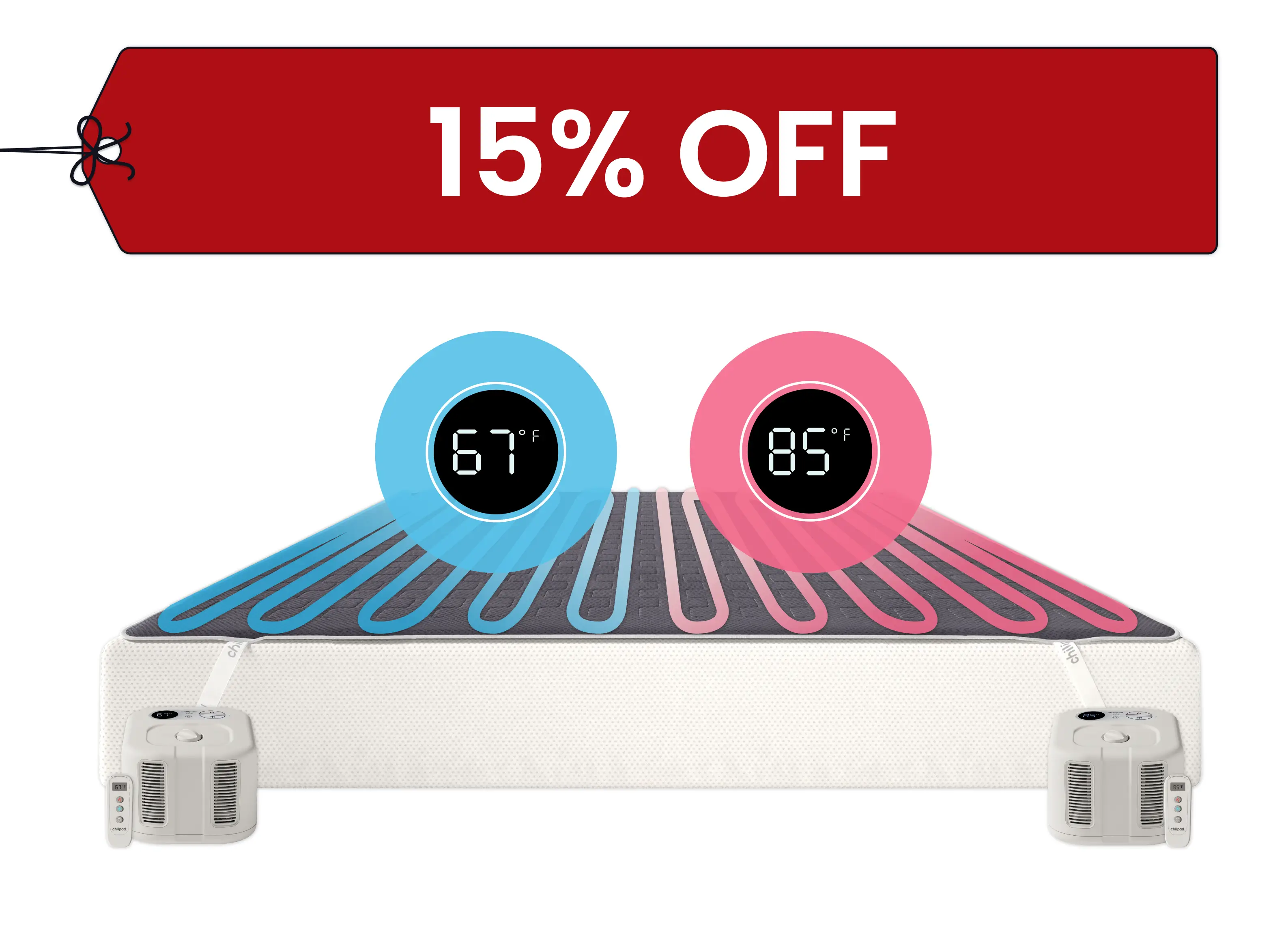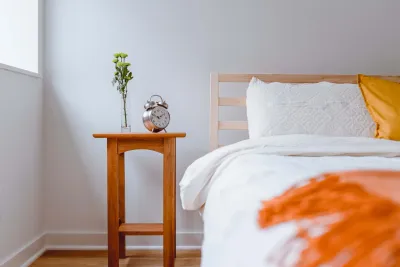What Is Sleep Health & Why It’s Important?
Ana Marie Schick: Resident Sleep Expert & Certified Health Coach • Aug 16, 2022

Key Takeaways
- Vital Foundation: Sleep is just as important as nutrition and exercise when it comes to overall health and well-being.
- Restorative Benefits: Quality sleep supports immune function, brain performance, heart health, and emotional resilience.
- Chronic Risk: Poor sleep habits can increase the risk of conditions like obesity, diabetes, depression, and cardiovascular disease.
- Sleep Hygiene: Creating a consistent bedtime routine, optimizing your sleep environment, and managing stress are key to improving sleep health.
- Tech Support: Innovations like temperature-regulating systems can help promote deeper, more restorative sleep.
We all know what it’s like to struggle with not sleeping well. We all can relate to having a bad night’s sleep or waking up groggy and sluggish. We all have experienced poor sleep health at some point in our lives.
But what is sleep health, and why is it important?
Sleep Health Defined
According to Daniel J. Buysse, MD, of the Sleep Medicine Institute at the University of Pittsburgh, a meaningful definition of sleep health includes a person’s ability to successfully interact with the demands of their environment.
It also incorporates aspects of sleep that are most clearly associated with physical, mental, and neurobehavioral well-being.
Therefore, sleep health can be defined as,“…a multidimensional pattern of sleep-wakefulness, adapted to individual, social, and environmental demands, that promotes physical and mental well-being.” [1]
Dr. Buysse also points out that good sleep health is characterized by subjective satisfaction, appropriate timing, adequate duration, high efficiency, and sustained alertness during waking hours. [2]
Sleep Cooler & Feel the Difference
Falling into a deep sleep is linked with cooling your body temperature, and being hot can reduce the likelihood of falling asleep and staying asleep—cool your body with one of our bed cooling systems, the Chilipad Dock Pro.
The Importance of Good Sleep Health
Evidence-based research in sleep medicine, public health, primary care, and mental health all point to the quality of sleep as a key factor in overall medical health, mental health, and cognitive function. In fact, HealthyPeople 2020, a nationwide initiative for health promotion and disease prevention, identified chronic sleep loss as a major public health burden. [3]
Consistent, high-quality sleep has countless benefits, including the following:
- Improving the body’s ability to fight off infection
- Optimizing workplace safety [4]
- Prevention of diabetes
- Weight management. [5]
- Boosting cardiovascular health
- Maximizing performance in work and school [6]
- Prevention of motor vehicle accidents [7]
The American Academy of Sleep Medicine emphasizes sleep as a biological necessity and, therefore, essential to good health and chronic disease prevention. [8]

Breaking Down Sleep Health
There are five different facets or dimensions of sleep that are most relevant to sleep health:
- Duration - Total amount of sleep per 24-hour period
- Continuity/Efficiency - Ease of falling asleep and staying asleep
- Time - Placement of sleep within a 24-hour period
- Alertness/Sleepiness - ability to remain alert during waking hours
- Quality/Sleep Satisfaction - Subjective assessment of “good” or “poor” sleep [9]
Individualized knowledge of these dimensions helps in understanding our strengths and where we might be lacking in sleep health. Chances are, we could all stand to make improvements to one or more of them! Let’s see what sleep experts can teach us about each of these five dimensions.
Read More: What is Heart Rate Variability?
How Long Should You Sleep?
In-depth research reveals that there’s more to healthy sleep than simply the number of hours between hitting the pillow and leaving it. Quality vs. quantity of sleep is critical. This is where the remaining four dimensions of good sleep health come into play.
Just focus less on a set number and more on allowing your body to move naturally into a deep sleep so you wake up feeling rested. If you only get five hours of sleep, make it the best five hours possible.
Continuity and Efficiency
Sleep latency, the amount of time it takes to fall asleep, normally ranges between 20 and 30 minutes. Any longer cuts into effective progression through REM (Rapid Eye-Movement) and non-REM sleep cycles. [10] [11]
Sleep continuity interruptions include:
- Environmental Temperatures That Are Too Warm
- Stress & Anxiety
- Certain Medical Conditions
- Changes to a Person’s Daylight Exposure
Related Blog: How Long Should I Nap to Feel Energized?
The Amount of Sleep Time
Are you a “night owl” or an “early riser?” Optimum sleep times, mealtimes, and periods of maximum alertness are guided by individual chronotypes. Chronotypes can be described as,“…a fancy way of talking about your body clock or circadian rhythm. And it sort of looks at what kind of sleeper you are, [like] a morning person [or] night owl [and] when you should go to sleep. [13] (* para 9)
Good sleep health is particularly challenging if our daily lives go against chronotype. For example, those who experience jet lag or perform shift work or social jet lag, have little leeway in sleep choices. [14] Fortunately, there are numerous ways to find the balance between meeting daily responsibilities and getting proper sleep.
Getting proper sleep is linked with cooling your body temperature. Your body must drop two degrees cooler during the night, and you can make this happen with our Chilipad Dock Pro, or Chilipad Cube Sleep Systems.
Alertness and Sleepiness
The Centers for Disease Control and Prevention (CD) released a study on alertness and sleepiness. According to the CDC, drowsy driving is a mixture of driving and fatigue. It can occur when someone is operating a vehicle and has either not slept enough, has untreated sleep disorders, is on medications, or is a shift-work employee. It can also happen when someone is driving under the influence of alcohol.
Who Are Likely to Drive Drowsy
- Drivers Who Do Not Get Enough Sleep
- Commercial Drivers Who Operate Vehicles
- Shift Workers: People That Work the Night Shift or Long Shifts
- Drivers With Untreated Sleep Disorders Such as Sleep Apnea
- Drivers Who Use Medications That Make Them Sleepy
- Young and Inexperienced Drivers
The CDC encourages drivers to avoid drinking alcohol or taking medications that make people sleepy. It also asks people with sleep disorder symptoms who snore or feel sleepy during the day to talk to a doctor. [15]
Quality and Sleep Satisfaction
Interestingly, sleep health is influenced by the subjective perception of sleep. If we believe we are getting enough sleep, we feel more rested and alert. A fascinating national study of older adults which compared objective measures of actigraphy (a wrist sleep monitor) with individual self-reports made these revelations: [16]
- Many who reported more daytime restfulness had statistically fewer sleep hours.
- Those who reported waking early actually had substantial amounts of sleep. [7]
This understandably prompts the question in all of our minds:
“How do I know if I have healthy sleep?”
- Although the answer can be a bit complex, it’s completely achievable. Effective strategies include any combination of the following:
- Understanding your chronotype
- Getting help from sleep experts, physicians, or other health professionals [18]
- Keeping a daily log of alertness and energy level
Tying it All Together for Excellent Sleep Health
Your roadway to sleep health is unique to you. It’s been carefully handcrafted by genetics, evolution, your environment, and family history.
It’s not always an easy road, but it’s definitely exciting. Your work and exploration will bring unending benefits to medical health, longevity, cognitive and mental function, and overall life satisfaction.
References
[1] Buysse DJ. Sleep health: can we define it? Does it matter? SLEEP 2014;37(1):9-17. page 12 View Resource
[2] Ibid.
[3] (Author). (2022, February 6). Overview: Sleep health. Office of Disease Prevention and Health Promotion. View Resource
[4] Ibid.
[5] American Heart Association. (2022) Life’s Essential 8 [Sleep Duration]. American Heart Association. View Resource
[6] (Author) (2011, September). In brief: Your guide to healthy sleep. National Heart, Lung, Blood Institute.
[7] Hanson JA, Huecker MR. Sleep Deprivation. [Updated 2022 Mar 7]. In: StatPearls [Internet]. Treasure Island (FL): StatPearls Publishing; 2022 Jan. View Study
[8] Ramar K, Malhotra RK, Carden KA, et al. Sleep is essential to health: an American Academy of Sleep Medicine position statement. J Clin Sleep Med. 2021;17(10):2115–2119.
[9] Buysse DJ. Sleep health: can we define it? Does it matter? SLEEP 2014;37(1):9-17. View Resource
[10] Holland, K. (2019, July 3). What do you know about healthy sleep? Healthline. View Resource
[11] Buysse DJ. Sleep health: can we define it? Does it matter? SLEEP 2014;37(1):9-17. View Resource
[12] Onken, N. (2020, February 19).
[13] Ibid.
[14] (Author) (2011, September). In brief: Your guide to healthy sleep. National Heart, Lung, Blood Institute.
[15] “Drowsy Driving: Asleep at the Wheel.” Centers for Disease Control and Prevention, Centers for Disease Control and Prevention, 28 Oct. 2021.
[16] Sleep health. Office of Disease Prevention and Health Promotion. View Resource
[17] Chen, J., Waite, L., Kurina, L.M., Thisted, R.A., McClintock, M., Lauderdale, D.S. Insomnia symptoms and actigraph-estimated sleep characteristics in a nationally representative sample of older adults J Gerontol A Biol Sci Med Sci. 2015 February;70(2):185–192 doi:10.1093/gerona/glu144
[18] Hanson JA, Huecker MR. Sleep Deprivation. [Updated 2022 Mar 7]. In: StatPearls [Internet]. Treasure Island (FL): StatPearls Publishing; 2022 Jan View Resource









